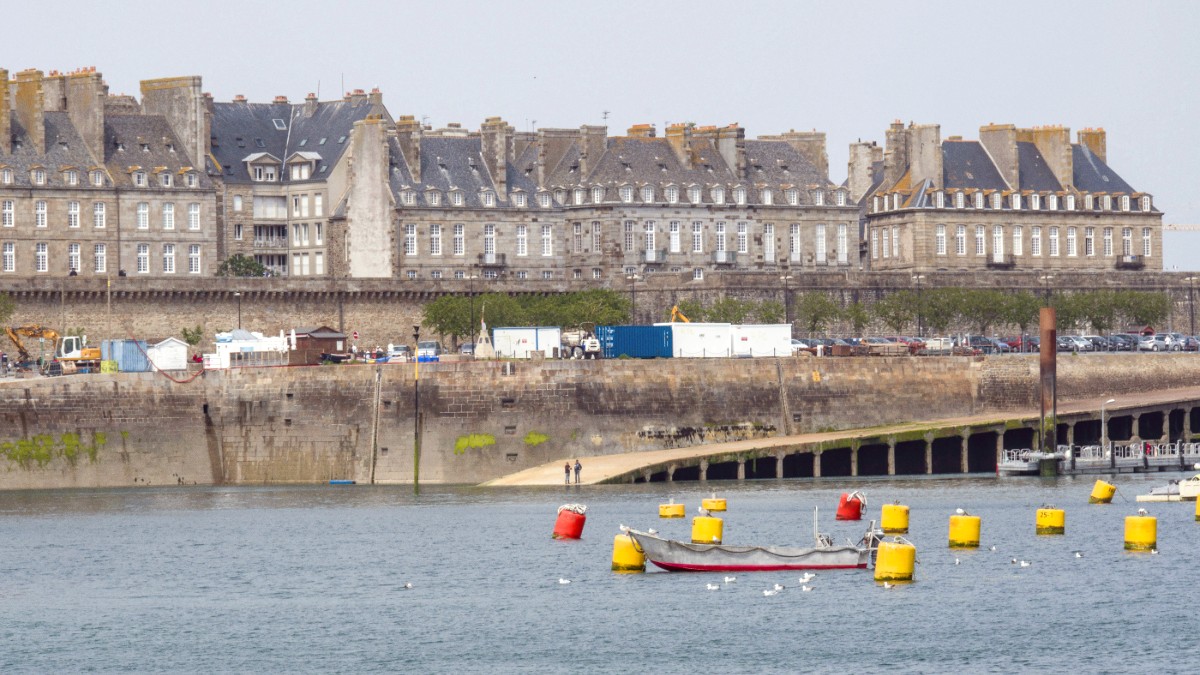
Brittany, France
It is a place where every cobbled street, every ancient stone, tells a story, inviting you to listen closely and become part of its continuing narrative. Visitors find themselves quickly drawn into the city's pulse, a rhythm set by the ebb and flow of the tides and the enduring legacy of its seafaring inhabitants. This destination presents a blend of historical depth, natural splendor, and engaging experiences that cater to a wide range of interests. Prepare to explore a city that defies easy categorization, a place at once rugged and refined, ancient and alive.
Saint-Malo occupies a strategic position on the northern coast of Brittany, France, nestled along the Rance estuary. This location gives it a distinct maritime character, heavily influenced by the powerful tides of the English Channel, some of the strongest in Europe.
The city's geography includes its dramatic coastline, wide sandy beaches, rocky coves, and tidal islands that become accessible only during low tide. The famous Intra-Muros, the historic walled city, sits on what was once an island, now connected to the mainland by a causeway. This feature contributed to its defensibility and its role as a formidable port.
The history of Saint-Malo is as turbulent and compelling as the tides that wash its shores. Founded by Welsh monks in the 6th century, it truly rose to prominence in the Middle Ages as a fortified island city, fiercely independent and often at odds with both the French crown and the English. Its strategic position transformed it into a haven for privateers, state-sanctioned pirates known as "corsairs," who plundered English ships during times of war. Figures like Robert Surcouf and René Duguay-Trouin became legends, their exploits enriching the city and contributing to its reputation as a den of daring seafarers. Beyond privateering, Saint-Malo was a launching point for explorers. Jacques Cartier, the discoverer of Canada, sailed from its port in 1534.
Over the centuries, Saint-Malo lasted sieges, bombardments, and changing allegiances, always rebuilding and retaining its resilient spirit. The most devastating chapter occurred during World War II, when the city, occupied by German forces, was almost entirely destroyed during the liberation efforts in August 1944. An astounding 80% of Intra-Muros lay in ruins. The determined Malouins, with national support, undertook a remarkable 12-year reconstruction effort, meticulously rebuilding the city almost exactly as it had been. This act of preservation means visitors today walk the same ramparts, explore the same cobbled streets, and admire the same granite architecture that defined Saint-Malo for centuries, embodying its enduring motto: "Ni Français, ni Breton, Malouin suis" (Neither French, nor Breton, I am a Malouin).
Foundation by Welsh monks.
Rise as a fortified, independent island city.
Era of privateers and explorers like Jacques Cartier.
Near total destruction during WWII liberation.
Remarkable 12-year reconstruction.
The city provides a truly unique experience, allowing visitors to step back in time while enjoying modern comforts and amenities. Its main draw is the walled city, Intra-Muros, where narrow streets open onto lively squares and grand old buildings house charming shops, inviting restaurants, and cozy hotels. From the ancient ramparts, visitors gain panoramic views of the vast beaches, the restless sea, and the numerous islands that dot the bay, including Grand Bé, where the writer Chateaubriand rests.
Beyond the walls, Saint-Malo extends into distinct neighborhoods like Paramé, known for its long sandy beach and Belle Époque villas, and Saint-Servan, with its quieter charm and the imposing Tour Solidor. The city is a hub for maritime activities, from ferries connecting to the UK to diverse boat excursions exploring the Rance estuary or the bay.
Culinary delights await, with an abundance of fresh seafood, traditional Breton crêpes and galettes, and the renowned salted butter caramels. Saint-Malo also serves as an ideal base for exploring the wider region of Brittany and even neighboring Normandy. Iconic day trips include the medieval town of Dinan, the elegant seaside resort of Dinard, the oyster capital of Cancale, and, of course, the world-famous Mont Saint-Michel.
The city pulses with life, hosting various festivals and events throughout the year, from sailing races to literary gatherings. Accessibility is straightforward, with a train station connecting to Paris by high-speed rail, a ferry terminal for international arrivals, and regional airports nearby. Whether seeking historical exploration, beach relaxation, culinary adventures, or active outdoor pursuits, Saint-Malo offers a comprehensive and deeply rewarding travel experience.
Saint-Malo captivates the imagination and leaves a lasting impression on all who visit its shores. Here are some compelling reasons to discover this unique city:
Its blend of historical depth, natural splendor, and cultural life makes it a standout destination in Brittany. From its formidable ramparts to its lively markets and delicious cuisine, Saint-Malo extends a warm welcome.
Explore ancient ramparts, corsair houses, and absorb stories of maritime adventure.
Indulge in fresh seafood, delicious crêpes, galettes, and local cider.
Witness powerful tides, beautiful beaches, and charming tidal islands.
Saint-Malo's location in northern Brittany positions it as a perfect starting point for exploring the wider region and even neighboring Normandy.